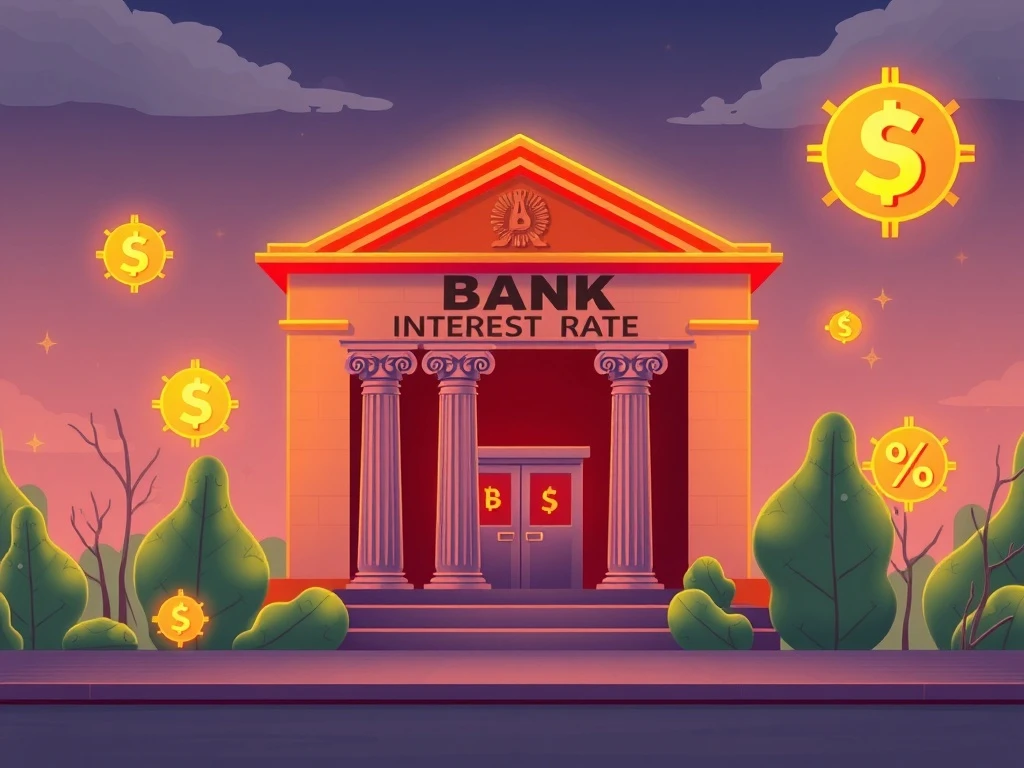Stablecoins Present Crucial Opportunity: Bitwise CIO Urges Banks to Boost Interest Rates

The financial landscape is rapidly evolving. Traditional banks now face increasing pressure from innovative digital assets. Specifically, **stablecoins** are emerging as a significant challenger. Bitwise investment chief Matthew Hougan recently voiced a compelling argument. He believes banks should offer customers higher **bank interest rates** to effectively counter the growing appeal of stablecoins. This perspective highlights a crucial point in the ongoing **financial competition** between old and new financial systems.
Banks Face Mounting Financial Competition from Stablecoins
Traditional banks often rely on customer deposits as a low-cost source of capital. However, this model is under scrutiny. Bitwise’s **Bitwise CIO**, Matthew Hougan, argues that banks are only concerned about stablecoin competition because they have exploited depositors for too long. “If local banks are worried about competition from stablecoins, they should pay more interest on deposits,” Hougan stated on X. He added that banks have “been abusing depositors as a free source of capital for decades.”
This sentiment resonates deeply within the crypto community. Indeed, many view it as a necessary shift. Last month, Citi warned that yield-bearing stablecoins could trigger a wave of bank withdrawals. US banks have consequently lobbied Congress. They seek tighter stablecoin laws, particularly concerning the payment of yields. Clearly, the stakes are high for traditional financial institutions.
Unpacking the Allure of High Crypto Yields
One of stablecoins’ most attractive features is their ability to offer superior **crypto yields**. Some crypto platforms provide up to 5% interest on stablecoin deposits. This rate significantly surpasses the US national average savings rate. Bankrate data shows this average stands at a mere 0.6%. Even the best high-interest savings accounts typically offer around 4%. This stark difference makes stablecoins a compelling alternative for savers.
Consider the impact of inflation and bank charges. Consumers often lose purchasing power by keeping cash in traditional bank accounts. These accounts rarely offer sufficient yield to counteract such erosion. Therefore, stablecoins present a clear financial advantage. Beyond attractive returns, stablecoins offer other benefits. They provide faster transaction speeds at lower costs. Furthermore, they often come without holding fees. These combined factors present a powerful incentive for consumers to explore digital asset options.
Bitwise CIO Challenges “First-Order Thinking” on Stablecoins
Hougan dismisses concerns about stablecoins destroying local lending markets as “absurd.” He labels such fears as “classic first-order thinking.” His comments directly responded to a Bloomberg report. This report discussed workers receiving payments in stablecoins and the potential effects on banks. Smaller community and regional banks, the report suggested, face a new competitive threat. Unlike large banks accessing wholesale markets, these smaller institutions depend heavily on customer deposits for lending. The report drew a parallel to the 1970s emergence of money markets. These offered higher-yield alternatives to conventional savings accounts, prompting significant withdrawals from banks.
Hougan strongly refutes the idea that credit would “dry up” if stablecoins competed with banks. He acknowledges that banks might provide less credit with fewer deposits. However, he quickly points to a decentralized solution. Individuals holding stablecoins can directly provide credit to borrowers. They do this through decentralized finance (DeFi) applications. “The loser here is bank profit margins. The winner here is individual savers. The economy will be just fine,” Hougan concluded. This perspective emphasizes a shift in power towards individual financial empowerment.
The Regulatory Battle Over Bank Interest Rates and Stablecoin Innovation
The banking industry has actively lobbied against stablecoin issuers offering yields. They claim a “loophole” exists in the stablecoin-regulating GENIUS Act. Banks argue that allowing such yields creates unfair competition. They also cite potential risks to financial stability. However, the crypto industry has pushed back forcefully against these concerns. They warn that revisions to the legislation would primarily benefit traditional banks. Such changes would simultaneously stifle innovation and limit consumer choice in financial products.
This regulatory debate underscores the broader struggle. It represents the clash between established financial structures and emerging digital finance. The outcome will significantly impact how consumers save, invest, and access credit. It also shapes the future trajectory of financial innovation. Ultimately, regulators must balance protecting consumers with fostering a competitive and evolving financial ecosystem.
The Future Landscape of Financial Competition
The ongoing discussion between traditional banks and the crypto sector is more than just a debate over **bank interest rates**. It signifies a fundamental shift in financial paradigms. Bitwise CIO Matthew Hougan’s call for banks to adapt is a crucial wake-up call. It urges them to evolve their offerings to meet modern consumer demands. Failure to do so risks further erosion of their deposit bases.
Ultimately, this increased **financial competition** benefits consumers. They gain access to more diverse and potentially higher-yielding options for their savings. Whether through traditional banking enhancements or decentralized finance platforms, the goal remains the same: empowering individual savers. The financial system is indeed transforming. This transformation promises a more dynamic and consumer-centric future for everyone.









